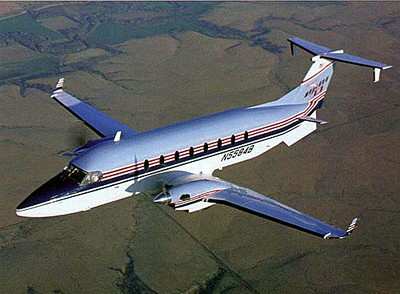Lawmakers Say Airline Service Vital For Smaller
Communities
Three rural communities are reeling from the loss of scheduled
commercial airline service, after losing the federal subsidies that
once lured carriers to their small airports.

Hagerstown, MD recently finished up a $62 million runway
project... but that community, along with Lancaster, PA and
Brookings, SD saw the Essential Air Service (EAS) program funding
they once received dry up October 1, after the Department of
Transportation determined they were too close to larger airports to
justify spending the money.
The DOT noted the 19-seat turboprops airlines used to connect
those communities to larger hubs often flew with only a few
passengers at a time onboard, reports USA Today.
EAS funding was available to about 140 smaller communities as of
April, according to a report by the General Accounting Office.
Eligibility and amount of funding is determined by a town's
distance from a larger airport that offers commercial service; to
be eligible, a community must lie at least 70 miles from a large,
or medium hub airport.
If a town is more than 210 miles from a hub, a carrier may
collect more than the $200-per-one-way passenger subsidy cap that
applies to airports closer to such facilities.
Critics believe cuts to the $109 million EAS program are long
overdue, saying the money is often wasted. "It supports air service
nobody uses anyway," said Boyd Group president Mike Boyd. "You're
not losing air service, you're losing empty airplanes."
Supporters of the program -- many of them lawmakers, hoping to
appeal to their constituents in smaller communities -- say EAS is
the only way available to lure airlines to serve those smaller
towns.
"Our regional airports play a key role in maintaining Maryland's
robust economy," said Sen. Barbara Mikulski, D-MD.
The way DOT measures distances between airports is open to
debate. The agency uses straight-line distances between points to
determine the level of funding an airport will receive under EAS...
but often, the actual distance a person would have to drive to
reach a larger airport is greater than that.
The direct distance between Hagerstown (HGR) and the nearest
hub, Washington Dulles, is 57 miles. If a motorist is feeling
adventurous, the trip can be made on the ground in 64 miles, using
both two-lane and four-lane roads. The most commonly used route,
using all four-lane roads, measures 78 miles, according to state
officials.
Similarly, the distance between Brookings (BKX) and
Minneapolis-St. Paul International Airport is 206 miles, according
to the DOT... but it's over 210 miles by the state-certified route.
The DOT stuck to its figures in denying a $1 million subsidy for
EAS funding for that route; that amounted to $677 for each of the
three passengers who used the route daily, on average, according to
the paper.
 Airline consultant Boyd says
subsidizing Brookings is "a total waste of money," noting the town
is only 57 miles away from Sioux Falls Regional Airport (FSD) via
Interstate 29. Sioux Falls isn't a hub, but it does offer several
connecting flights.
Airline consultant Boyd says
subsidizing Brookings is "a total waste of money," noting the town
is only 57 miles away from Sioux Falls Regional Airport (FSD) via
Interstate 29. Sioux Falls isn't a hub, but it does offer several
connecting flights.
South Dakota Senator John Thune counters airline service to
Brookings is essential to the community. "Ensuring access to
communities like Brookings strengthens the local economy, provides
consumers with choices and makes the entire commercial airline
network more valuable," he said.
Of the three communities that lost funding, Hagerstown has
arguably the strongest case. With its now-7,000-foot runway, the
airport is able to serve larger planes, which airlines could fly to
more destinations.
In fact, says airport manager Carolyn Motz... the time may come
when Hagerstown won't need an EAS subsidy. "I think it's going to
be sooner than a lot of people think," Motz said.
 Airbus Racer Helicopter Demonstrator First Flight Part of Clean Sky 2 Initiative
Airbus Racer Helicopter Demonstrator First Flight Part of Clean Sky 2 Initiative Diamond's Electric DA40 Finds Fans at Dübendorf
Diamond's Electric DA40 Finds Fans at Dübendorf ANN's Daily Aero-Term (04.23.24): Line Up And Wait (LUAW)
ANN's Daily Aero-Term (04.23.24): Line Up And Wait (LUAW) NTSB Final Report: Extra Flugzeugbau GMBH EA300/L
NTSB Final Report: Extra Flugzeugbau GMBH EA300/L Classic Aero-TV: 'Never Give Up' - Advice From Two of FedEx's Female Captains
Classic Aero-TV: 'Never Give Up' - Advice From Two of FedEx's Female Captains




